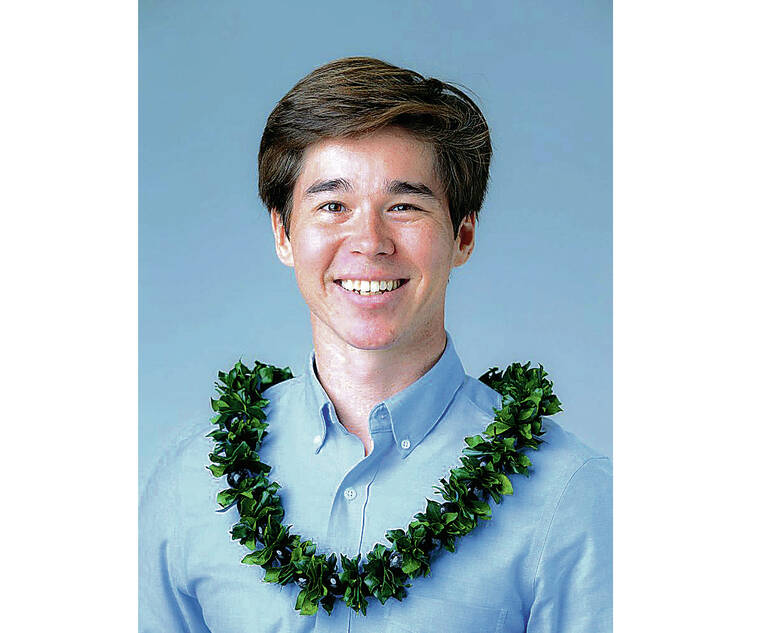Exodus of Hawaii residents cost state $185M in lost taxes since 2020
The ongoing exodus of Hawaii residents far outstrips the number of U.S. residents moving to the islands, resulting in the overall loss of 36,789 Hawaii residents over the last three years.
In dollars, fewer residents means the state has missed out on an average of $61.8 million in tax revenue in each of the last three years, mostly in lost personal income and General Excise Taxes, according to the state Department of Taxation.
“This is a rough estimate,” said Seth Colby, the Tax Department’s research and planning officer. “But with our out-migration, it would account for $185 million” less in state revenues since 2020.
When comparing arrivals by U.S. residents to departures of Hawaii residents, the state lost an estimated 9,932 people between 2020 and 2021; 15,664 between the peak COVID-19 years 2021 and 2022; and 11,193 between 2022 and 2023, according to U.S. inbound and outbound migration data reported by the state Department of Business, Economic Development and Tourism.
Pacific Resource Partnership, the advocacy arm of the Hawaii Carpenters Union, says the exodus of island residents can be blamed on Hawaii’s high cost of living and, in particular, expensive homes coupled with a disproportionate inventory of affordable housing.
PRP hopes the loss of state revenue helps convince legislators this year to pass Senate Bill 3102 and its companion, House Bill 2413.
They would repeal the $30 million cap on General Excise Tax exemptions for developers to build affordable housing, as well as the prohibition on them seeking other financing if they use the GET exemptions.
The current restrictions prevent developers from using financing tools to “pencil out ” the cost of affordable housing projects, said Chris Delaunay, an attorney and PRP’s government relations manager.
Both bills are part of Gov. Josh Green’s legislative package. The House version was introduced by House Speaker Scott Saiki, and the Senate version was introduced by Senate President Ron Kouchi, adding even more political clout.
Hawaii’s future
The nonprofit Housing Hawaii’s Future describes itself as “a movement led by young locals who will create opportunities for Hawaii’s next generation by ending the workforce housing shortage.”
Its main objective is to engage and educate the public — especially young leaders — so that “any local who works hard and wants quality housing will find it.”
Sterling Higa, the organization’s executive director and co-founder, said he pays $3,900 a month — not including utilities — to rent a two-bedroom cottage in Haiku, Maui, for his wife and their four children.
He and his wife, oil painter Chanelle Moreau, both 32, sleep in one bedroom with their 10-month-old baby, Rumi. Their 12-year-old daughter, Bonnie, shares the other bedroom with brothers Charlie, 13, and Isaac, 9.
“It’s not ideal,” Higa said.
Since graduating from Roosevelt High School on Oahu in 2009, Higa estimates that a quarter of his approximately 400 fellow graduates have moved out of state, primarily to the Pacific Northwest, California and Nevada.
“Every year I’ve watched more and more of my classmates leave for the continent,” Higa said. “The cost of living and cost of housing is a huge part of why they left.”
Through his work, Higa has spoken to “hundreds” of residents — from young working adults with children to kupuna — who are all trying to figure out how to find housing they can afford.
“Most people don’t want to leave, but at a certain point the trade-offs become too great to bear,” Higa said. “With parents working two jobs and 60 to 70 hours a week, how much time do you have to enjoy living in Hawaii? That’s the situation that a lot of Hawaii families are in. But my wife has made it abundantly clear that she would like to raise our children on Maui. She’s from Maui.”
Gov. Green and leaders in the state Legislature have pledged to help fill the backlog of an estimated shortage of 50,000 affordable housing units across the state.
Affordable housing for Maui residents, alone, already was in short supply before the Aug. 8 wildfires destroyed 3,971 structures, most of them homes.
“Before the fire, there was a pretty dire housing crisis,” Higa said. “And since the fire, it’s crazy how bad it’s gotten. I sense that there’s more political will than there was three years ago (to add more affordable housing.) That political will hasn’t translated into policy yet. This session there are opportunities to change laws to make housing more affordable. It seems like legislators are moving in that right direction. So I’m optimistic.”
While Higa remains hopeful, he cannot resist going online to see the kind of home he could purchase on the mainland.
Even though Higa and Moreau plan to raise their family on Maui, Higa said, “as a torture exercise you can go on Zillow and look at property listings in Las Vegas. We could buy a five-bedroom, three-bath mansion for what we pay to rent here.”
Green, Maui County Mayor Richard Bissen and the Federal Emergency Management Agency are working to convince Maui’s estimated owners of 31,000 short-term vacation rentals to take advantage of a moratorium on property taxes and above-market rental rates to instead offer long-term leases on 3,000 units to fire evacuees.
To sway even more owners of short-term rentals to house working residents across all counties, Higa said lawmakers have to provide more financial incentives.
“If you’re a homeowner and you have the option to rent your house either as a short-term rental or long-term rental and the difference between the two is thousands of dollars in your pocket, it’s crazy to expect them to convert to long-term rentals,” Higa said. “You need to incentivize landlords to rent to local working people who need that housing to survive.”
The cost of exodus
PRP originally asked the state Department of Taxation to calculate how the exodus of isle residents has affected state tax revenue — data that the department later confirmed to the Honolulu Star-Advertiser.
“When we asked for these numbers, we didn’t realize they would be so stark,” said PRP spokesperson Andrew Pereira.
Since the state tax data does not include lost taxes for each county, such as property taxes and other county fees, Pereira said “the loss could actually be greater. We think the actual number is amplified.”
PRP said that removing the financing restrictions on developers wanting to build affordable housing would help “teachers, civil engineers, construction workers and firefighters. They make too much to qualify for low-income rental units, but not enough to afford market-rate rents.”
In an email to the Star-Advertiser, PRP wrote that by “providing GET exemptions to help build more workforce and affordable housing, we are creating more housing opportunities for Hawai‘i’s residents or Kamaaina who provide valuable services to our communities, and important tax revenues and fees that help fund our state, counties, and stimulate the overall economy.”
Delaunay told the Star-Advertiser: “If we lose our workforce to the continent, we’re also losing our taxes and fees. We need to build more affordable workforce housing and keep our tax revenue base. And there’s going to be a larger benefit to keeping our residents here.”



